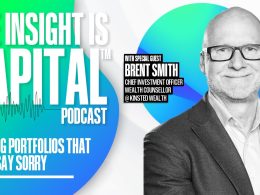by Erik L. Knutzen, CFA, CAIA, Chief Investment Officer—Multi-Asset Class, Neuberger Berman
The sight of an unruly mob invading the U.S. Capitol was, as our CEO George Walker put it last week, “heartbreaking, but, sadly, not surprising.”
The sad fact that we had almost come to expect a serious challenge to the smooth transition of power in the U.S. may explain why the S&P 500 Index closed up 0.6% on that day. Coming on top of a year-old pandemic raging across the world, it may now seem that nothing can stop the market from rising.
The new year has begun with investors’ and analysts’ views arguably more closely aligned than they have been for years, anticipating benign early-cycle dynamics that favor riskier assets. As for our own Asset Allocation Committee, we are not contrarian—we cannot easily fault this consensus.
But experience tells us that the risk is highest when the last bear throws in the towel and the final skeptic joins the consensus.
That’s why our asset allocation views are, we believe, more circumspect than the crowd’s. We see short-term downside risks that could disrupt the consensus. More importantly, we also see the consensus scenario itself as a potential source of volatility.
Consensus
The consensus holds that the economic damage caused by coronavirus will be largely reversed this year, as fiscal stimulus takes effect, vaccination programs roll out and life returns to normal.
This recovery will likely be characterized by only a tame and orderly rise in inflation, albeit a blip higher due to the base effect of last year’s slump. As such, the major central banks, which have already adopted more accommodative guidance and policy frameworks, are unlikely to trouble investors with talk of tightening in any form.
That supports the final pillar of the consensus: expectations for a gentle rise in inflation expectations, in which nominal rates remain relatively stable and real rates therefore decline. This, in turn, will be supportive of equity market valuations.
It all hangs together nicely. And let us reiterate: This is our central scenario for 2021, too. We are just not so sure it will be easy sailing.
Upside Surprise
Let’s put aside the considerable short-term downside risks: the logistics of global vaccine production and distribution, anti-vaccine skepticism, further obstacles to the transition of power in the U.S. and the geopolitical sore points that still threaten to become inflamed.
Instead, we would focus on what happens to investor psychology as the consensus environment unfolds. And we think it is important to recognize that things are already set up for economic growth and inflation that could outrun consensus expectations.
Indices of manufacturing activity are already back at pre-pandemic levels. Service industries are lagging because they are particularly exposed to lockdowns, but the substantial extra savings that many consumers have built up during the months stuck at home, together with a potentially larger fiscal stimulus, make a powerful recovery likely upon reopening. On top of that, China, the engine of global growth, has bounced back robustly from the crisis and is exhibiting a rapidly strengthening credit impulse.
As a result, we already see heightened levels of IPO and M&A activity and forecasts for high double-digit earnings growth this year—more than 20% for the S&P 500, for instance.
Central bankers may sit back and watch should global GDP growth hit high single digits, equity markets soar and inflation break-evens power toward 2.5%, but investors are likely to become increasingly sensitive to their signaling.
At some point, an upside growth and inflation surprise could cause that consensus to splinter. The merest hint of hawkish language could make those splinters become cracks. When sentiment turns, real rates tend to adjust surprisingly quickly. Should they do so this year, it is likely to send a valuation shockwave through equity markets.
Echoes of 2009 – 10
If that reminds you of the “Taper Tantrum” of 2013, it’s worth noting that what we hear right now are echoes of the end of 2009.
In that year, as in 2020, equities hit a trough in March, following a major crisis, and rallied for the next nine months. Investors went into 2010 positioned for a consolidation of that recovery, and they were not wrong—the MSCI World Index finished 2010 up more than 9%. But it had to endure a 16-percentage-point plunge during the second quarter.
Back then, it was the deflationary shock of Greece’s debt burden and its threat to the euro that disrupted the consensus, a risk that investors had known about for months, but chose to dismiss. By contrast, this time around we think it is prudent not to dismiss the potential inflationary shock implied by the consensus.
This is why our Asset Allocation Committee remains moderate in its “risk-on” views as we come into the new year. As with 2010, we think 2021 could bring more volatility. Along with George, we all hope and trust that it will not come from further impediments to the smooth transfer of power here in the U.S. But there are many other hurdles to clear on our road to reopening this year, which investors could use to lean into the recovery at more attractive valuations.
We will look at this and other themes for the coming year in our next Asset Allocation Committee Outlook, coming out later this week.
Copyright © Neuberger Berman














